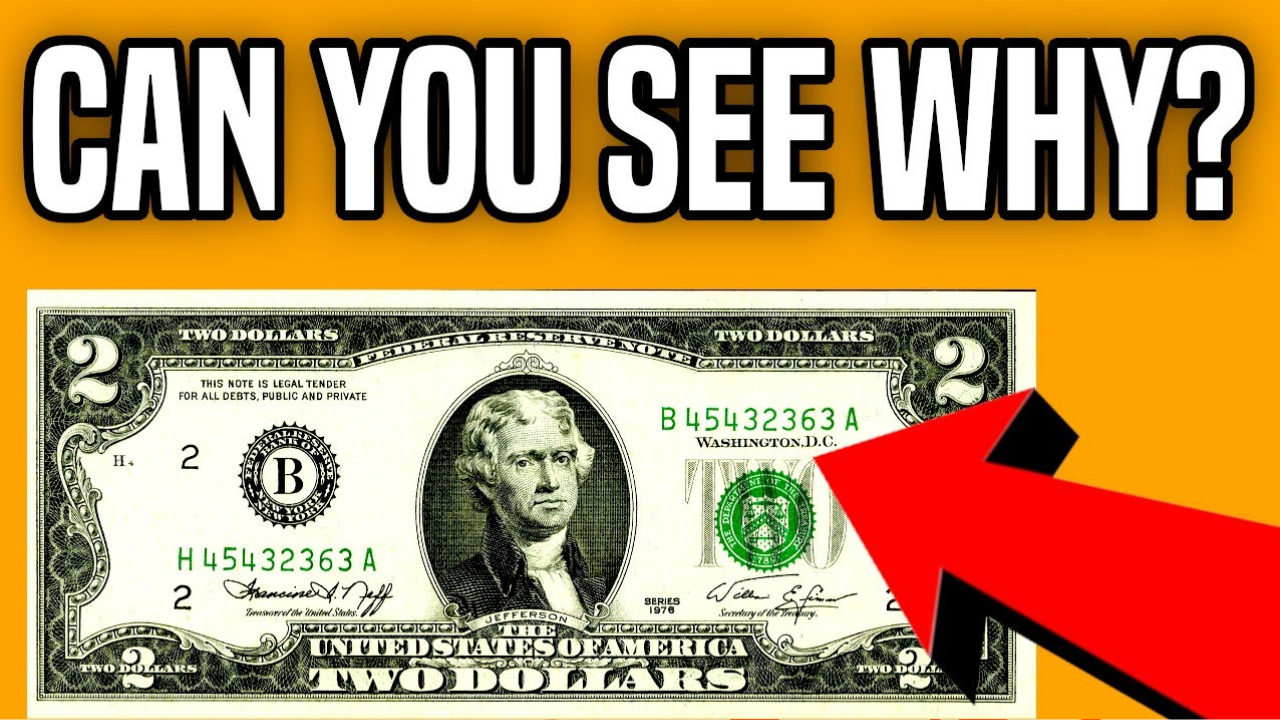Rare $5 Bill:You’re standing in line at a coffee shop and casually reach into your wallet. Without a second thought, you hand over a five-dollar bill. But what if that same note holds a hidden value of millions of dollars?
That’s the alluring promise behind a certain rumor circulating among currency collectors: a five-dollar note with the radar serial number “3100031000” reportedly sold at auction for $4.5 million. If true, it means someone—perhaps even you—may be unknowingly carrying around a small fortune.
What is a radar serial number?
A “radar” serial number is a palindromic sequence: it looks the same forward and backward. Think of the word radar—this symmetry is the identity that collectors love
For example:
- 3100031000
- 12344321
- 06288260
These patterns are extremely rare in regular currency circulation, so when one emerges, collectors often pay a premium.
The $4.5 million claim: Fact or hype?
Let’s be skeptical for a moment, as such large claims must be thoroughly investigated.
The story goes that a $5 note with radar serial number 3100031000 sold for $4.5 million at a Stacks Bowers auction in June 2025
However:
- I found no official confirmation from any major numismatic press or auction house confirming that sale.
- The only sources referencing this appear to be secondary or derivative websites repeating the claim
- .In some minor—but still impressive—actual examples, five-dollar notes bearing radar or other “fancy” serials have sold for tens of thousands or even millions, especially when star notes or rare combinations are involved.
So yes, the $4.5 million figure may be sensational (or even completely fictitious). But the underlying idea—that rare serials can fetch far more than face value—is very real.
What determines the value of rare notes?
If you have one of these rare notes, their value depends not only on the serial number. Here are some key factors:
| Factor | Impact | Why It Matters |
|---|---|---|
| Serial Pattern | Radar (palindrome) is prized; super‑radars or mirror variants are even more coveted. | The rarer and more symmetrical the pattern, the stronger collector interest. |
| Bill Condition / Grade | Crisp, uncirculated, no folds, perfect centering—these can boost value dramatically. | Collectors pay heavily for “gem” condition pieces. |
| Star Notes / Replacement Notes | Bills marked with a “★” (star) are replacements and often rarer. | A radar + a star note is a “double rarity.” |
| Series & Year | Older or limited print series may be more desirable. | Some series had lower print runs, making special serials scarcer. |
| Provenance / Auction Record | A documented, high‑profile sale (with verifiable buyer/seller) helps establish value. | Without credible past sales, valuation is speculative. |
Even among “fancy” serial notes, Radar notes are considered top-tier.
But as a general rule,
Many Radar serial $5 notes, when all circumstances are favorable, fetch tens of thousands (if not millions). Some recent 2024 $5 Radar notes have sold for nearly $66,000.
How to Check Your Bills (Without Losing Sleep)
If you want to know if your five-dollar note is worth more than its face value, here’s a practical and careful approach:
- Don’t spend it—if it’s potentially valuable, handle it with care.
- Use a magnifying glass or good lighting and look at both serial numbers (left and right). They should match exactly (including prefixes or suffixes).
- Check for palindromic symmetry. Does it look the same on the back? For example, 3100031000 → 0003100031 (in a mirror).
- Look for a “★” star after the number—this indicates a changed note.
- Assess the condition—are there creases, stains, tears, or rounded corners? These greatly reduce the note’s value.
- Take clear photographs of both sides.
- Get a professional appraisal or grading – Submit to PMG, PCGS Currency, or another trusted grading service.
- Compare to auction records of similar bills (pattern, year, grade) to get an approximate estimate.
Conclusion (without any hype)
- Yes, $5 notes can be worth far more than their face value—especially if they have rare, symmetrical serial numbers like the Radar notes.
- But the $4.5 million claim should be taken with great caution—at present, there’s no concrete confirmation.
- Most Radar serial $5 notes are likely worth thousands or tens of thousands, not millions.
- Still—it doesn’t cost a fortune to look. Your $5 could be a hidden gem.
If you’d like, I can dig deeper (archives, auction houses) and try to verify whether the $4.5 million claim ever came true. Would you like me to investigate further?

